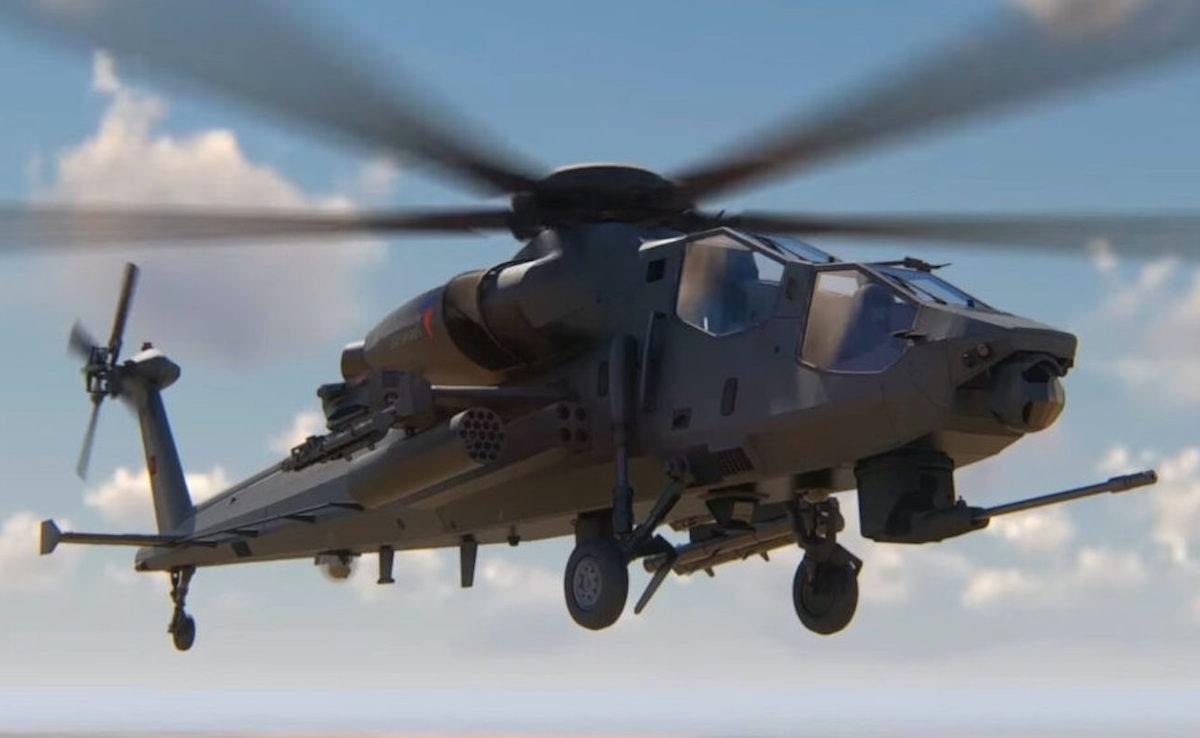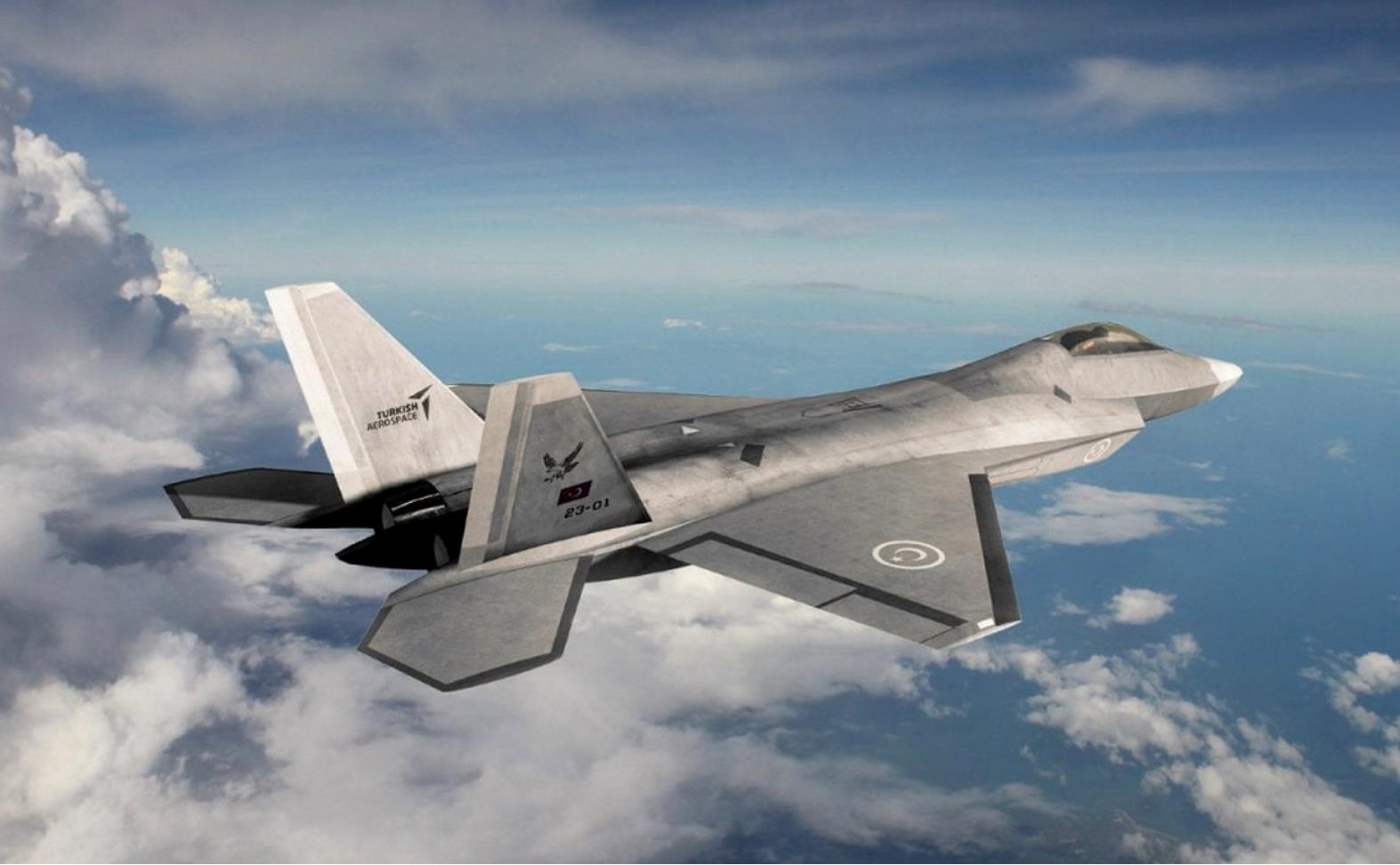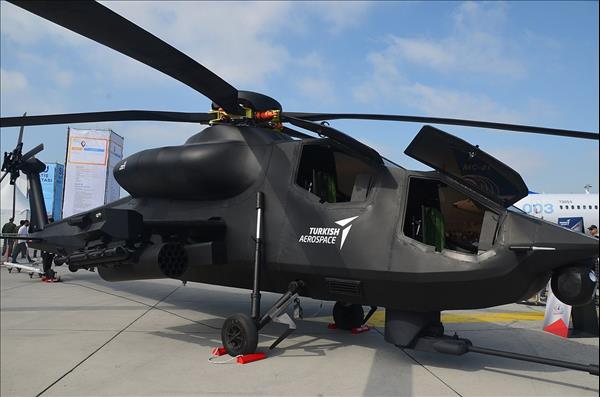(MENAFN- Asia Times) Turkish Aerospace (TA) and Turkish Defense Industry Agency have unveiled the T929 ATAK 2 heavy attack helicopter, a heftier and larger version of the T129 that it intends to replace in Turkish service, according to a Jane's report .
The T929 is envisioned to be operated by the Turkish Armed Forces and export customers and is expected to make its maiden flight in the coming weeks.
The Janes report notes that the T929 follows the typical attack helicopter layout with a stepped tandem cockpit, stub wings and fixed-tailwheel-type landing gear.
Janes says the T929 cockpit is armored against .50 caliber rounds and has a large display area. Its stub wings can carry 1,200 kilograms of ordnance, such as air-to-surface and air-to-air missiles, guided and unguided rockets, and a chin-mounted T-30H 30-millimeter chain gun and Aselsan forward-looking electro-optic/infrared turret.
Janes says that the T929 prototype is powered by two Ukrainian Motor Sich TV3-117VMA-SBM1V Series 1 turboshaft, in contrast to the US-made twin LHTEC T800s on the T129.
The use of LHTEC T800s on the T129 caused delays to Philippine export sales due to US sanctions on Turkey, stemming from Turkey's purchase of Russian S-400E air defense systems in 2019. The Janes report notes that production models will have twin TS1400 turboshafts from domestic manufacturer TUSAS Industries.
The T129 is smaller than its US and Russian counterparts, which may present some design limitations such as smaller fuel and armaments load.
Comparing the T129 to the US AH-64 Apache, sofrep notes in an august 2022 article that the T129 can outrange the AH-64 by nearly 100 kilometers while the AH-64 is faster by 80 kilometers per hour.
In addition, SOFREP says that the T129 and AH-64 can carry roughly the same amount of ordnance, with the T129 capable of carrying eight UMTAS 160-millimeter long-range anti-tank missiles, 76 unguided 70-millimeter rockets for close air support, 16 CIRIT 70-millimeter missiles, or eight Stinger air-to-air missiles.
The report mentions that the AH-64 can carry equivalent weapons, such as the Stinger, AIM-9 Sidewinder, Sidearm, and guided and unguided 70-millimeter rockets. It also says that the T129 has a 20-millimeter cannon with 500 rounds, while the AH-64 has a single-barrel 30-millimeter gun that has a 1,200-round-per-minute rate of fire.
SOFREP says that the AH-64 has the advantage over the T129 as the former has higher speed, heavier and more varied armaments, state-of-the-art avionics and sensor packages, and better-trained crews.

Concept art of Turkey's T929 heavy attack helicopter. Photo: Defense Turk
The T929 is just one of the several high-end products that Turkey's defense industry has lately started to produce.
Significantly, Turkey may already be poised to join the elite club of countries capable of making fighter jets. last december, asia times reported on Turkey's progress on its TF-X fighter, photos of which show the type in the early stages of construction with a complete fuselage and wings while its engines, avionics, and control fins remain out of view. It is designed for air-to-air operations with a secondary emphasis on air-to-ground attacks.
this january, the warzone reported that the TF-X is in an advanced stage of production, with a complete nose section with faceted enclosures for what seems to be a dedicated infrared search and track sensor system (IRST) in front of the cockpit and a multi-purpose electro-optical targeting system (EOTS) under the forward fuselage.
The source notes that no other fighter in production has the same configuration.
Turkey has also developed a stealth drone following a trend of smaller powers building affordable robotized air forces. last november, asia times reported on Turkey's Kizilelma stealth drone, which is envisioned to perform air-to-ground and air-to-air missions in heavily-defended airspace. A naval variant is planned to operate from the TCG Anadolu light carrier.
The TCG Anadolu was envisioned to operate the F-35B short take-off and vertical-landing (STOVL) fighter. Still, due to Turkey's removal from America's F-35 program in 2019, the ship was converted into a drone carrier, proving some aircraft carrier capabilities such as power projection for a fraction of the cost.
Turkey has also developed a mini-submarine which it hopes will be a hit in the global market and a potential game-changer for naval warfare.
asia times reported on Turkey's ST-500 mini-submarine, which may be effective in littoral operations due to its small magnetic and acoustic signature which is further obscured by blending into background noise such as shipping traffic.
The ST-500 mini-submarine can also be an option for countries seeking to build undersea warfare capabilities on a tight budget, such as the Philippines and Ukraine.
airforce technology notes multiple reasons Turkey seeks to build its domestic defense industry. Airforce Technology notes that the Ukraine war has opened a massive rift between Russia and NATO, creating a potentially huge market for Turkey.
Airforce Technology notes that as Russia may be unable to fulfill international arms orders due to sanctions on its defense industry and the need to replace battle losses, countries that have placed orders for Russian weapons may look to Turkey for replacements.

A TF-X fighter concept image. More updated images of the aircraft under construction were released on Youtube. Image: Industry Handout
It also mentions that Turkey's struggling economy makes it imperative for the country to look for other sources of revenue, with its burgeoning defense industry capable of making significant profits.
These ambitious defense projects tie into the grander aspirations of Turkey's foreign policy. in an article last month for the peer-reviewed journal of the human and social sciences researches , Serdar Yilmaz and Murat Yorulmaz argue that Turkey's ramped-up defense industry is indicative of an active and assertive foreign policy.
Yilmaz and Yorulmaz mention that Turkey's defense industry investments aim to reduce reliance on external powers, enable a more flexible and transactional approach in foreign affairs, open new opportunities for international collaboration and serve as a muscular bargaining tool for Turkey's economic and security interests.
Like this:Like Loading...





















Comments
No comment